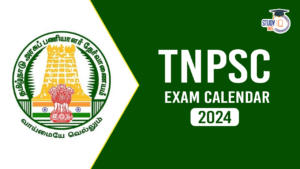Table of Contents
Context of the Article: With India assuming the G20 presidency, it is now time for it to join the world’s academic community as a major player.
The Author’s Views India’s Universities
- India’s Academic Environment:
- Opportunity: The author says that the G20 leadership is an excellent opportunity for India to make India more visible on the global academic scene and also learn about, and implement, best practices from abroad.
- Academic Environment: Indians are well-known globally as top scientists and academics, university leaders, and key leaders in high-tech, but little is known about the academic environment from which they have emerged.
- India’s academic system is now the world’s second-largest. And, as articulated in the National Education Policy (NEP) of 2020, the country is actively pursuing reform and improvement.
- India’s Role in Higher Education: India plays an important role in higher education — mainly as an exporter of students and talent in many scientific fields — and especially in information technology and related fields.
- India’s growing importance: India’s priority areas in education during India’s G20 presidency are ‘Strengthening Research and Promoting Innovation through Richer Collaboration’.
- India is in a particularly advantageous position as the world sees India as an increasingly important economy and geopolitical player.
- The Nature of India’s Academic System
- Complex System: India has the world’s most complex and little-understood academic environment. Its higher education sector is fragmented, inflexible with tight subject boundaries, and of uneven quality.
- Private and autonomous institutes: While private sector colleges and universities will continue to fuel growth, high-quality government institutions such as the IITs and AIIMS are also expanding and improving, and will likely achieve good results if they are adequately funded and permitted to have appropriate autonomy.
- Inter-institutional Competition: India has set up the NIRF which has helped fuel competition among institutions.
- India’s global ranking in scientific publications improved from the seventh position in 2010 to third in 2020. India ranks third in terms of the number of PhDs awarded in science and engineering.
- Position on world Rankings: Indian universities have not scored well in the global rankings. The best-known institutions globally are the IITs.
- These do not rank well because they are small, specialized schools and not comprehensive universities, but their quality is much better than their ranking scores.
- Distinctive Characteristics:
- The emergence of New Institutions: Emergence of about a dozen top-quality non-profit private universities, mostly funded by philanthropically minded Indians.
- This elite sector is expanding and is focused on building an international ‘brand’ for Indian higher education.
- Medium of Instructions: India uses English as the main language of science and higher education, which makes it much easier to interact with the rest of the world.
- Research Laboratory: India has more than 100 research laboratories in diverse areas sponsored by the CSIR and other Central government agencies. Some are outstanding in terms of their research contributions and their relationships with India’s economy.
How can India Exercise its Leadership?
- Soft power: India’s universities and its scientific prowess are an important part of a soft power strategy. India’s G20 leadership is an excellent opportunity to exercise leadership. Two interesting initiatives have been suggested:
- Conference of top University heads: One is a conference in India of leaders of universities based in the G20 countries with the aim of acquainting India’s academic opportunities.
- Scholarship programme: Creation of a prestigious scholarship program, similar to the Fulbright program that would provide top Indian students and faculty time in leading universities abroad and funding to bring top academics from abroad to India.
Conclusion
- Through involvement in joint research, international conferences, and other events, Indian universities, researchers, and academics must also engage with the larger scientific community.
- All of this will require careful planning, ongoing funding, backing from the national and state governments, and more global awareness among Indian academics.


 Current Affairs 24th April 2024 for UPSC...
Current Affairs 24th April 2024 for UPSC...
 TNPSC Exam Calendar 2024, Check Exam Dat...
TNPSC Exam Calendar 2024, Check Exam Dat...
 Fundamental Rights of Indian Constitutio...
Fundamental Rights of Indian Constitutio...

















